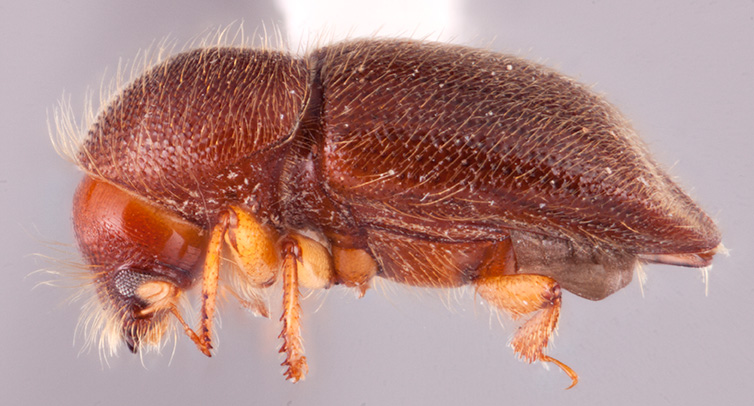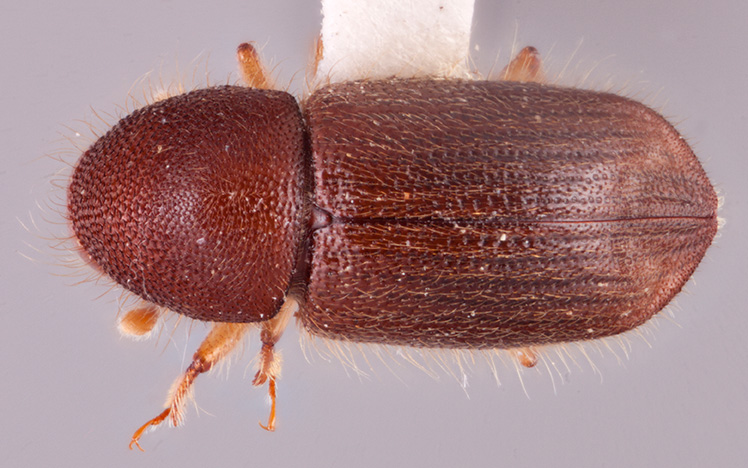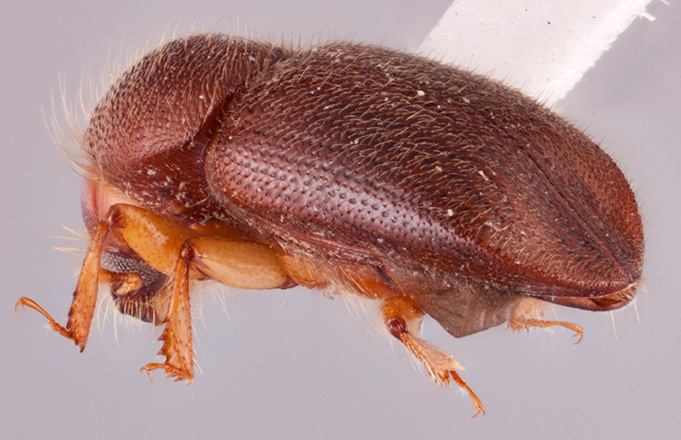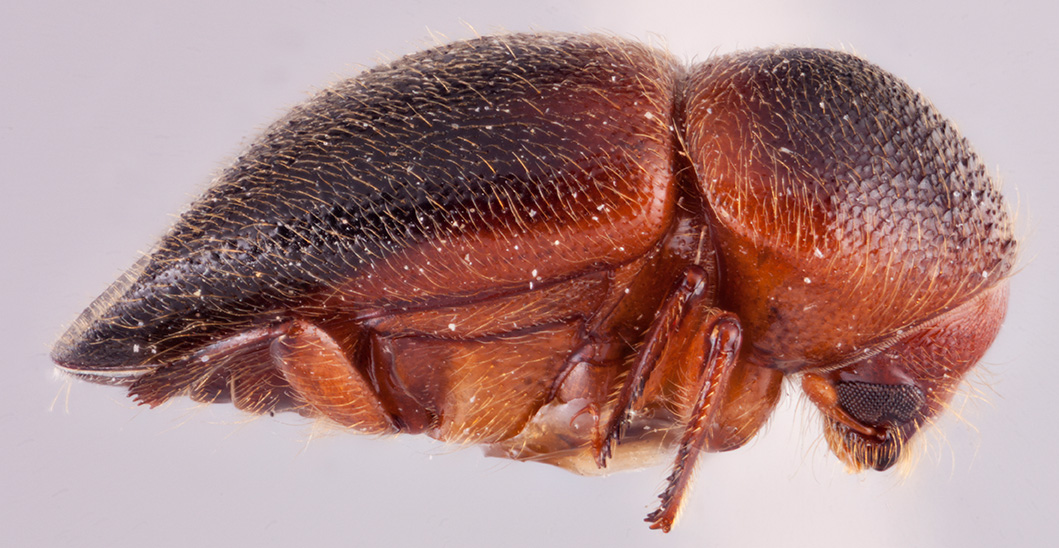Ancipitis
|
Ancipitis puer; R.K. Osborn |
|
Ancipitis puer; R.K. Osborn |
|
Ancipitis puer; R.K. Osborn |
|
Ancipitis puer; R.K. Osborn |
|
Ancipitis punctatissimus; R.K. Osborn |
Taxonomy
Ancipitis Hulcr and Cognato, 2013: 41.
Diagnosis
2.9−5.4 mm long, 2.08−2.73 times as long as wide. Ancipitis is distinguished by the unique submentum among xyleborines which is flat, flush with genae, and shaped as a distinct large triangle. Ancipitis can further be recognized by the elytra extremely long, flattened, very gradually descending, broadened laterally and elongated apically, the face appearing somewhat depressed below posterolateralposterolateral:
relating to end of the side part/portion
 costacosta:
costacosta:
elevated ridge that is rounded at its crest, not necessarily with sharp appearance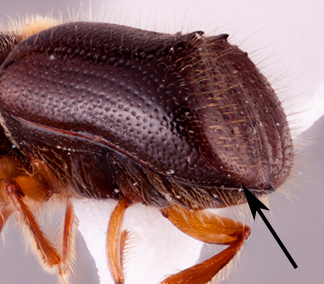 and covered with hair-like setae; pronotumpronotum:
and covered with hair-like setae; pronotumpronotum:
the dorsal surface of the thorax
extended anteriad, appearing conical, without serrationsserration:
row of asperities; a saw-like structure  on anterior margin; antennalantennal:
on anterior margin; antennalantennal:
pertaining to the antennae
club flattened, type 3 with 3 sutures visible on the posteriorposterior:
toward the rear end; opposite of anterior
 face; scapescape:
face; scapescape:
the first segment of the antenna; attached to the head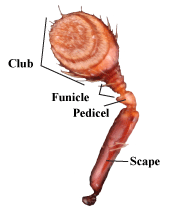 long and slender; protibiaeprotibia:
long and slender; protibiaeprotibia:
tibia of the first pair of legs
slender, and all tibia bear large denticles; and procoxae appearing tall, longer than basalbase:
point or edge closest to the body; opposite of apex width. In addition, the scutellumscutellum:
width. In addition, the scutellumscutellum:
a shield-like sclerotized plate located at the midpoint of the elytral base
is flat, flush with elytraelytron:
the two sclerotized forewings of beetles that protect and cover the flight wings
, the procoxae are narrowly separated, mycangial tufts are absent, and elytraelytron:
the two sclerotized forewings of beetles that protect and cover the flight wings
unarmed.
May be confused with
Distribution
temperate and tropical Asia and Melanesia
Gallery system
This consists of branched tunnels without brood chambers (Browne 1961bBrowne 1961b:
Browne FG. 1961b. The biology of Malayan Scolytidae and Platypodidae. Malayan Forest Records 22: 1-255.). There may also be surface galleries between the bark and the sapwood (Kalshoven 1959bKalshoven 1959b:
Kalshoven LGE. 1959b. Studies on the biology of Indonesian Scolytoidea 4. Data on the habits of Scolytidae. Second part. Tijdschrift voor Entomologie 102: 135-173 + pls. 15-22., Browne 1961bBrowne 1961b:
Browne FG. 1961b. The biology of Malayan Scolytidae and Platypodidae. Malayan Forest Records 22: 1-255.).

